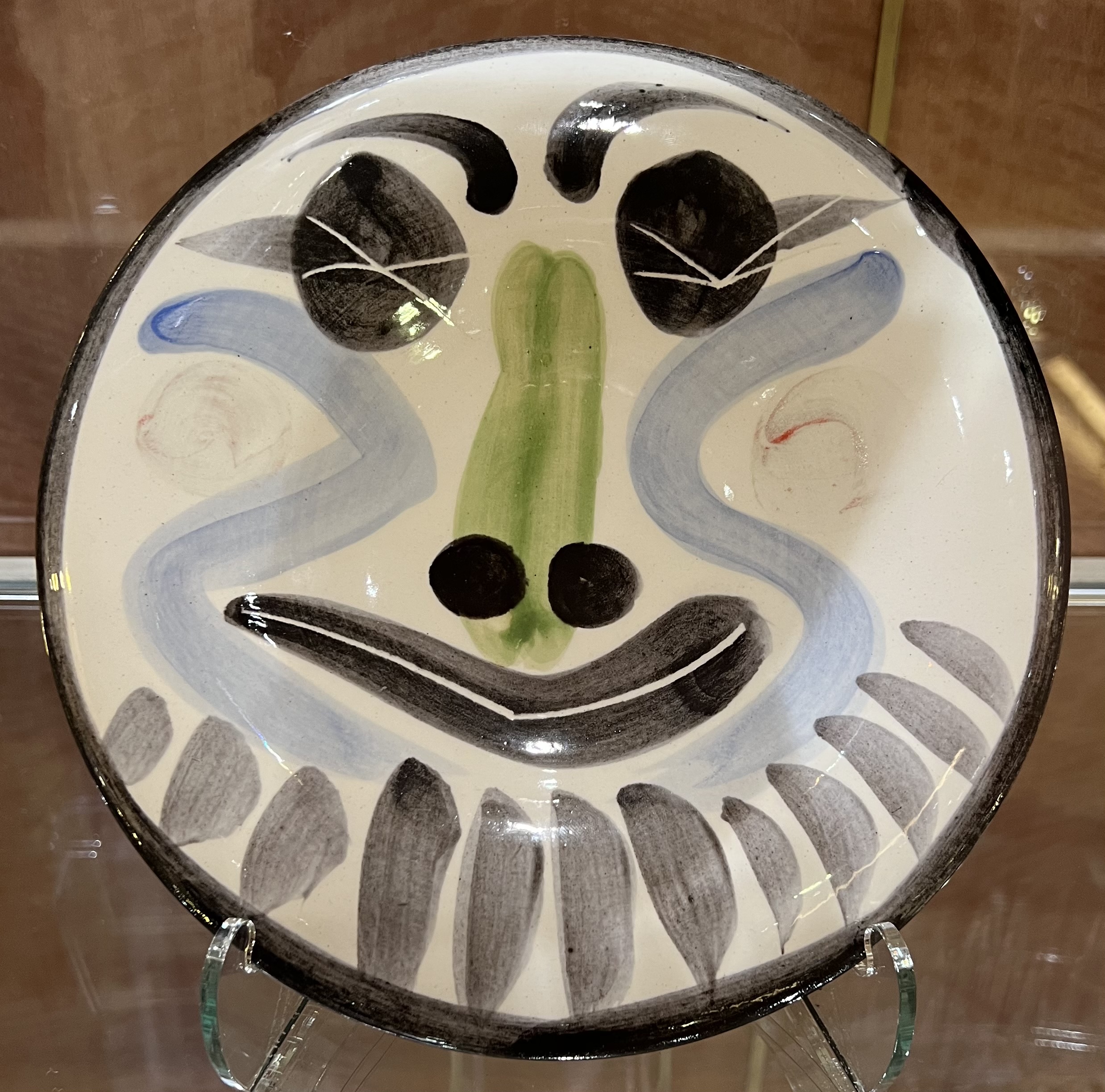| Monthly Tech-Tip | No tracking! No ads! | |
Picasso’s Transparent Glaze
Micro-bubble free and crystal clear
This plate, by Pablo Picasso, is on display in the art gallery on our Princess cruise ship. While others notice the underglaze designs, and the $40,000 price, I notice the absolutely crystal clear and bubble free transparent over glaze. How did he do that? At the Madoura studio they used leaded glaze, so Picasso himself doesn’t get the full credit. By his time, European low-fire traditions already had a well-matched clay/glaze system based. Glazes were made from mostly lead bisilicate frit with enough kaolin or ball clay to suspend the slurry. The lead melted so well that significant silica could be tolerated (20–30%) to reduce the COE. They didn’t use talc in the body, rather it would have contained 50-70% ball clay/kaolin, some feldspar as a filler (since it does not flux at low fire) and enough quartz to raise the thermal expansion within the range of the glaze.
Most potters struggling with borosilicate glazes would envy what leaded transparents can do. Any hope of even approaching them using boron glazes lies in keeping temperatures at or below cone 06, a thin glaze application, a low carbon body and ceramic stains rather than metal oxide colors.
Related Pictures
Lead bisilicate with his ugly borosilicate cousins at a cone 05 party

This picture has its own page with more detail, click here to see it.
The middle front mug is glazed with an 85:15 lead bisilicate:kaolin mix, the G3971 recipe. It is an absolutely "knock your socks off" crystal-clear hyper-glossy surface that transmits the terra cotta color beautifully regardless of whether the clay is smooth or coarse or the glaze thick or thin (this one was applied as a brushing glaze in three coats on L215). My lead testing kit passes it with no detectable lead release. The other pieces are done using brush-on versions of boron-based clear glazes (commercial and made from a recipe). At almost any thickness and whether on L215 or L4170B clouding occurs. The worst one is a commercial three-coater on the right, the best is G1916W (it has 2% added iron as a fining agent for the micro-bubbles). My terra cotta plan: Glaze the inside functional surfaces with that and the outsides with the leaded one (and using a kiln exhaust system).
UK Slipware: A Tradition of Terra Cotta and Lead Glaze
No borosilicate glaze can do this

This picture has its own page with more detail, click here to see it.
The traditional UK slipware is possible because of the brilliant gloss and hyper transparency of glaze made using lead bisilicate frits. The lead glaze interacts with the colors in underlying slips, dissolving and feathering them (as enabled by the time and temperature of the kiln). Interactions with iron produce warm colors. Ware is bisque fired after the decorating and drying (lower left), then dipped in the leaded glaze. Photo courtesy of Russell Kingston, Lynmouth Slipware Pottery.
Videos
Links
| Glossary |
Transparent Glazes
Every glossy ceramic glaze is actually a base transparent with added opacifiers and colorants. So understand how to make a good transparent, then build other glazes on it. |
Got a Question?
Buy me a coffee and we can talk

https://digitalfire.com, All Rights Reserved
Privacy Policy

